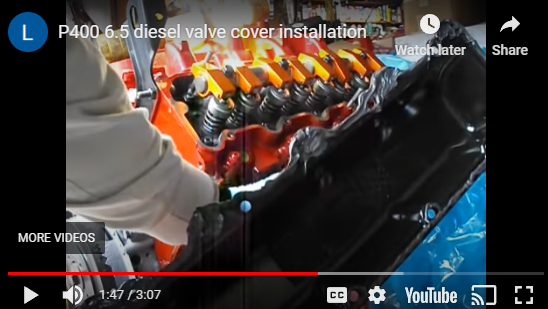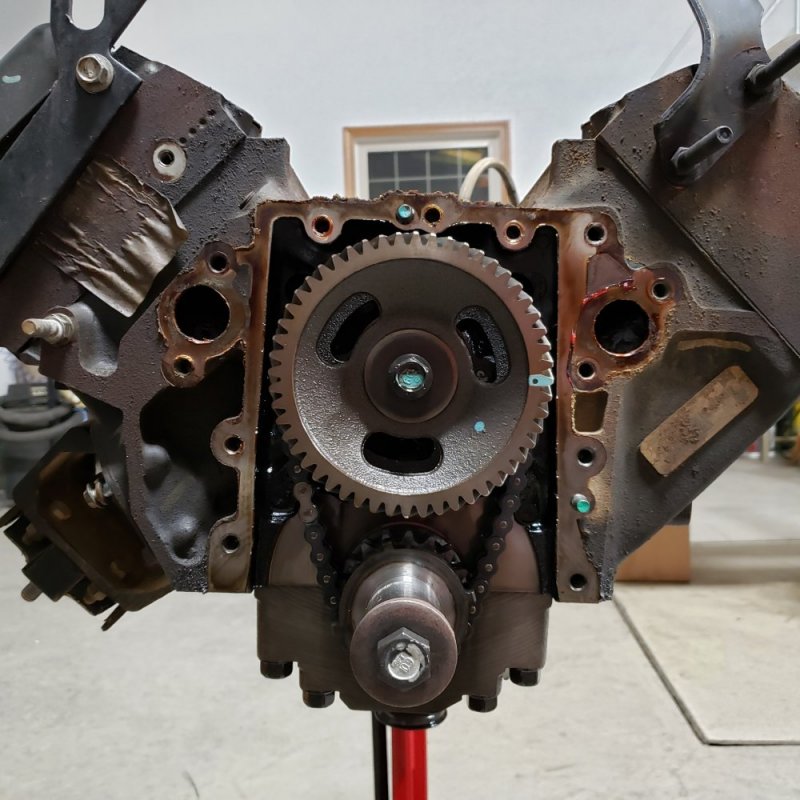Will L.
Well-Known Member
I recently helped a guy replaced a factory balancer on a 1989 1/2 ton with a new balancer that we pulled off his new crate optimizer. The balancers are identical. We the. Put a fluidampr on his optimizer, and his 89 really needed some love. He looked at them and thought same thing you did- but putting them against each other and lining up the keyway- you can see they line up.
Possible your old balancer is not a Delco? Because it is Delco making the new ones still for GEP, just like they did when GM made the engines.
Chris is on point with the provent and how he is telling you to do each thing.
That provent catch can can be set up to auto drain into the engine or just you go drain it yourself into a clean bottle and pour back into the engine. I am kinda guy that likes to check oil at least once a month on a 6.5. And when it is down some you can drain and actually see the amount of moisture pulled in and pour it off. And rather than buy that 1/2 qt of oil it used to burn, now it goes back in. Remember- if you buy that ebay inock off provent- throw away the ebay coalescing filter and start with a real one. The housing is no biggie but the real filter does a far better job.
Then your turbo and intake stay properly clean. I never saw testing showing thbors last longer without the used oil smacking the blades spinning at 10,000 rpm. But I never seen anyone other than 1990’s GM bean counters allow such a thing either. Ask yourself- if you had a $100,000 race engine, would you purposely draft dirty Diesel engine oil into the turbo on purpose?
The CDR that R is Regulator as in cuts back the vacuum created at higher rpm because without it you will suck the oilpan dry running high rpm all the time. But when is crank case pressure higher- idle, mid range or full throttle? Of coarse the higher rpm the higher crank case pressure will be. You don’t want to limit the amount drawn then, you want it at maximum then. But the stupid 1980s design has to cut back so you don’t burn all the oil.
Get rid of the cdr. Install the provent and it will then remove pressure equivalent to the rpm, and it will catch almost every drop of oil instead of burning it. Some folks including me have done diy catch cans (did mine on the old Mercedes). But for low cost you can get the knock off and a real filter then get far better results. Absolutely nothing bad about buying the real McCoy obviously.
Possible your old balancer is not a Delco? Because it is Delco making the new ones still for GEP, just like they did when GM made the engines.
Chris is on point with the provent and how he is telling you to do each thing.
That provent catch can can be set up to auto drain into the engine or just you go drain it yourself into a clean bottle and pour back into the engine. I am kinda guy that likes to check oil at least once a month on a 6.5. And when it is down some you can drain and actually see the amount of moisture pulled in and pour it off. And rather than buy that 1/2 qt of oil it used to burn, now it goes back in. Remember- if you buy that ebay inock off provent- throw away the ebay coalescing filter and start with a real one. The housing is no biggie but the real filter does a far better job.
Then your turbo and intake stay properly clean. I never saw testing showing thbors last longer without the used oil smacking the blades spinning at 10,000 rpm. But I never seen anyone other than 1990’s GM bean counters allow such a thing either. Ask yourself- if you had a $100,000 race engine, would you purposely draft dirty Diesel engine oil into the turbo on purpose?
The CDR that R is Regulator as in cuts back the vacuum created at higher rpm because without it you will suck the oilpan dry running high rpm all the time. But when is crank case pressure higher- idle, mid range or full throttle? Of coarse the higher rpm the higher crank case pressure will be. You don’t want to limit the amount drawn then, you want it at maximum then. But the stupid 1980s design has to cut back so you don’t burn all the oil.
Get rid of the cdr. Install the provent and it will then remove pressure equivalent to the rpm, and it will catch almost every drop of oil instead of burning it. Some folks including me have done diy catch cans (did mine on the old Mercedes). But for low cost you can get the knock off and a real filter then get far better results. Absolutely nothing bad about buying the real McCoy obviously.



